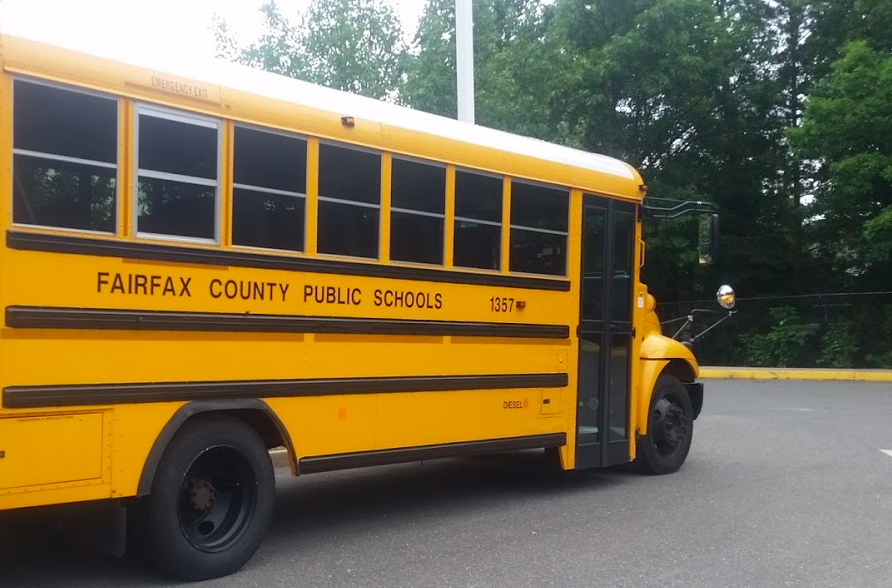The Fairfax County Public Schools paid $20,000 to an advocate of racial discrimination against whites, for a 45 minute speech on “anti-racism.” They also are paying bus drivers to drive empty school buses, even as schools operate online. Fairfax County has 1.1 million residents, and runs the largest school system in Virginia.
Its schools told the Daily Wire that Ibram X. Kendi, who advocates discrimination, was invited last month “to speak to school leaders about his book, ‘How to Be an Antiracist,’ as part of the school division’s work to develop a caring culture.”
As the Daily Wire notes, “Under Kendi’s ideology, discriminating against others on the basis of race is a meritorious idea, so long as it is producing racial equity (i.e., anti-racist). Kendi explains this ideology in ‘How to Be an Antiracist,’ his 2019 best-selling book.”
As Kendi puts it, “The only remedy to racist discrimination is antiracist discrimination. The only remedy to past discrimination is present discrimination. The only remedy to present discrimination is future discrimination.”
Kendi is a radical who advocates totalitarianism, and once wrote an op-ed suggesting that white people are aliens from outer space.
The widespread discrimination Kendi advocates would violate the Constitution, which regards discrimination and other racial classifications as a “last resort,” not as the “only remedy” for racist discrimination. (See Bartlett v. Strickland (2009)).
To the Supreme Court, the remedy for “present discrimination” against minorities is to compensate the victim or punish the discriminator, not to discriminate in the future against whites. Past discrimination is not supposed to be “remedied” by discrimination against whites, except in unusual circumstances — namely, where there is evidence that widespread discrimination was recently committed intentionally by the government, leaving lingering effects. (See, e.g., Richmond v. J.A. Croson Co. (1989)).
But illegal “antiracist” discrimination may soon take place in Virginia’s schools. Fairfax school officials and Virginia’s education secretary recently proposed an end to merit-based admissions to America’s number-one-ranked public high school, Thomas Jefferson High School for Science and Technology. As Asra Nomani and Glenn Miller explain in Quillette, the school is attended by students “mostly from immigrant Asian families, many of whom fled persecution and economic privation.”
School officials are unhappy that very few of its students are black or Hispanic (as opposed to Asian), so they are planning to change its admissions process to alter its racial composition. They have come up with a “proposal to replace the existing race-blind, merit-based TJ admissions system of standardized tests, grade rankings, essays, and teacher recommendations with a process based on random selection from among applicants who have a core class GPA of 3.5 or greater.”
While their proposal is intended to help blacks and Hispanics at the expense of Asians, it appears unlikely to actually do much to help blacks or Hispanics. As Nomani and Miller note:
School officials claim that the new lottery-based proposal would serve to reduce the share of Asian students in the Class of 2024 from 73 percent to 54 percent, while increasing black and Hispanic representation. But TJ’s parents include a number of highly numerate scientists who manage and analyze data professionally. According to their calculations, the share of Asian students will actually be cut by more than half—to 33 percent, and will eventually drop even further. The share of black and Hispanic students would increase only marginally. And, ironically, white students would be the plan’s greatest beneficiaries, increasing from 18 percent to at least 45 percent of the student population.
Deliberately reducing the number of Asians could be unconstitutional. Engineering a different racial mix can violate the Constitution, if it is not done to promote a legitimate and compelling interest. (See Walker v. City of Mesquite (1999).
For example, the Supreme Court ruled that deliberately manipulating electoral district boundaries to exclude a racial group violated the Constitution. (See Gomillion v. Lightfoot (1960)).
Government officials must have the right motive for considering race, and it must be their “actual purpose,” before they are allowed to take race into account. (See, e.g., Shaw v. Hunt, 517 U.S. 899, 908 n.4, 910 (1996)).
School officials are not taking race into account to remedy discrimination at TJ. It doesn’t discriminate in admissions, and has long admitted students based on merit, not race.
Instead, school officials are doing so to achieve proportional representation — to make TJ’s student body reflect the racial composition of the Fairfax County schools as a whole. That is an invalid reason to take race into account, according to the Supreme Court. “Racial balance is not to be achieved for its own sake,” the Supreme Court explained in Freeman v. Pitts (1992).
The fact that Asians tend to have higher grades and test scores than blacks and Hispanics does not show that the school system discriminates against blacks and Hispanics. Nor does the fact that blacks are underrepresented compared to Asians at TJ show that TJ is racist.
As an appeals court explained, the “underrepresentation” of a minority group isn’t the same thing as discrimination, and a school system can’t give preference to minorities unless it “discriminated intentionally” against them in the recent past. (See People Who Care v. Rockford Board of Education (1997)).
“Diversity” may also not be a reason to make race-conscious changes to TJ’s admissions process. It’s not clear whether “diversity” is a reason for using race in K-12 schools, as opposed to colleges. For example, a court ruled that school districts can’t use race in employment decisions to promote “diversity.” (See Taxman v. Board of Education (1996)).
The Supreme Court has said that colleges are allowed to consider race in admissions to promote diversity, due to their institutional “academic freedom.” (See Regents of the University of California v. Bakke (1978)).
But only institutions of higher education — not school districts — possess academic freedom.

